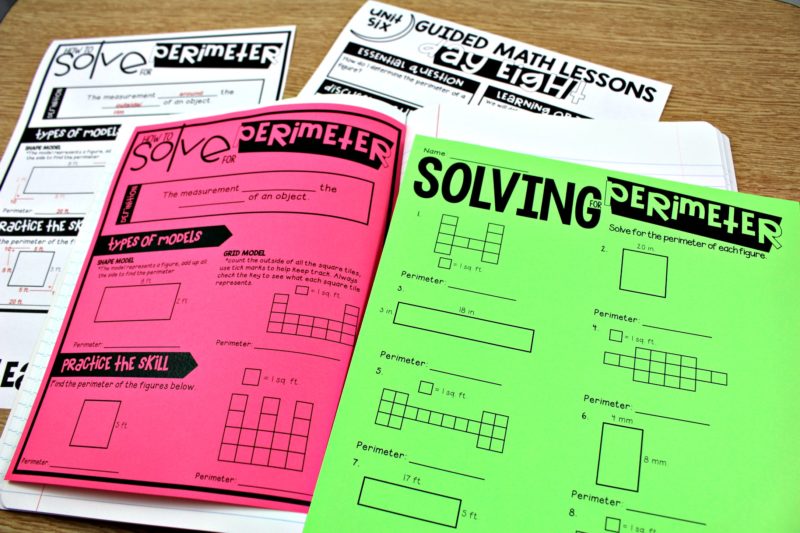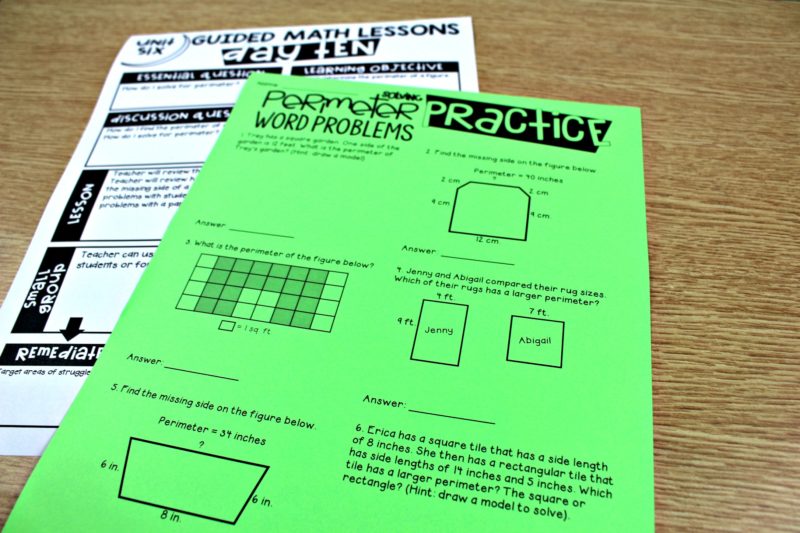20 Ideas for Teaching Measurement

Teaching measurement can actually be a nice break from algorithms for both student and teacher! Measurement tends to be a concept with a fairly even playing field. Our spatially challenged students will be put to the test when lining up those non-standard measurement tools, but we welcome the change of pace and new opportunities.
In this post, you will find 20 ideas for teaching measurement for grades K through 3, using it as a tool to develop conceptual understanding in math. Feel free to skip down to the headings that best fit your needs or browse through each grade level at your leisure!
Measurement in Kindergarten
I thought I would start with a peek at how I store prepped measurement materials. One way is to put all of the lesson plans and printables into a binder with the game and activity cards right there with the lessons.
For example, here we have lesson 1 for kindergarten. The lesson plan and cards for small groups are in the first sleeve.
When you turn the page, the printable practice for lesson one is ready to go, and lesson 2 follows.
Taking a look at day 2, we see that students are building and comparing towers in order to begin using that descriptive language for measurement concepts in math.
We are sure to use vocabulary for measurement: taller, shorter, heavier, lighter, longer, shorter, etc. Lessons help students to identify objects in this way.
By day 5, we are ready to learn to measure with our own non-standard units to find the length.
The standard in kindergarten for measurable attributes includes weight. This can be a fun lesson!
Lesson 10 is all about the understanding of capacity with objects that students can relate to.
We wrap up kinder measurement with one last measuring activity using Unifix cubes.
Measurement in First and Second Grades
Learning measurement in first and second grades incorporates non-standard measurement, but we begin to compare sets of objects and the differences in non-standard measurement tools.
Students measure and graph sets of objects using different measurement tools.
Students order sets of objects by length.
Each lesson has a whole-group measurement activity and a small-group measurement activity, reinforcing conceptual understanding of measurements and mathematical applications.
Second grade switches to standard measurement with both inch and centimeter. Students can directly apply standard units to everyday objects and begin to learn differences between imperial and metric units.

Measurement in Third Grade
By third grade, it’s time to get into some bigger, more complex conceptual understanding of measurements in math! We start with a math warm-up problem of the day for every single lesson. These can also be done as a homework component or exit ticket.
In the measurement unit, we find the perimeter and area as well. There is an interactive notebook component with a teacher’s guide and practice problems for all new measurement concepts.
Adding calculated measurements helps students understand how extrapolation works as a concept. Students can see the process of beginning with a single measurement and using techniques to expand descriptive measurements without using any measuring devices.
In the lesson below, the purple sheet is sized for a composition book and the blue paper has the practice problems.
Lesson nineteen is a unit review in preparation for the assessment that is included.
Measuring Up
Not everything was shown in this post, as we would likely be here all day, but I hope this was helpful in laying out measurement activities in each grade level! Each activity is designed to reinforce measurements at a conceptual level to build a strong math foundation.
If you are looking for ready to teach lessons, you can get these by clicking the links below!

 Contact Us
Contact Us




































Hello! We just purchased the Guided Math Bundle for second grade to use next year! Now the first grade team is interested in getting the first grade bundle. 2 questions: 1. How much overlap is there between the two bundles, and 2. When can we expect an announcement regarding your partnership with ETA? Thanks!
There is not much overlap between the bundles. There are some lessons here and there but generally they are different. If the lesson is the same, likely the range of numbers is different. If you want the most current info with ETA, social media is the best way to stay on top of it. I also have a newsletter regarding the guided math kits from ETA too. You can find that on both my facebook and instagram. 🙂
Does the grade three unit use metric measurement examples?